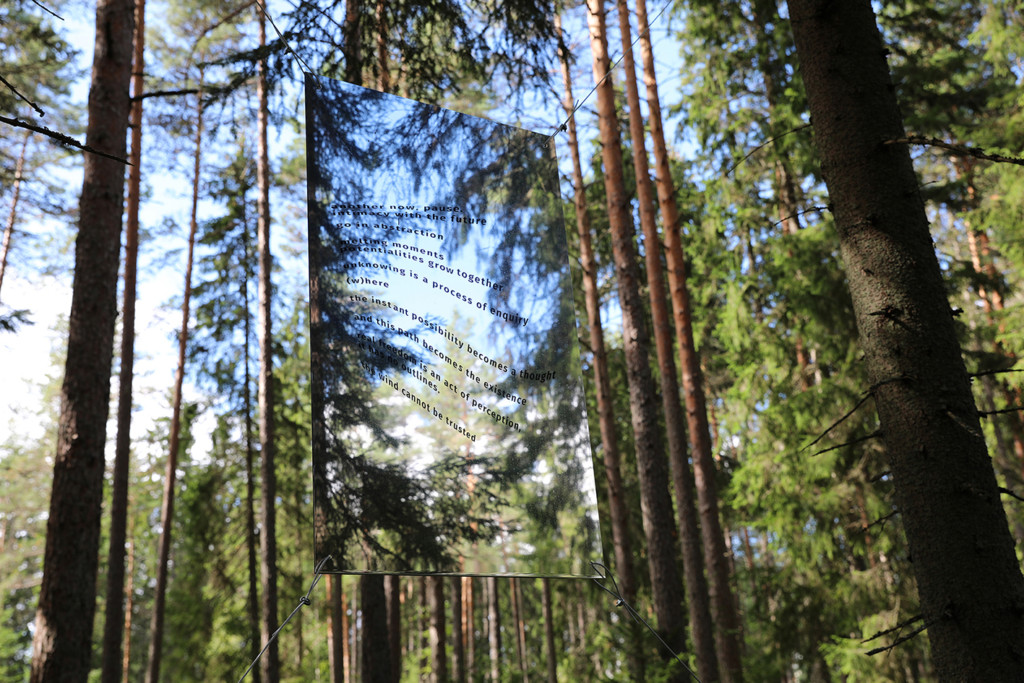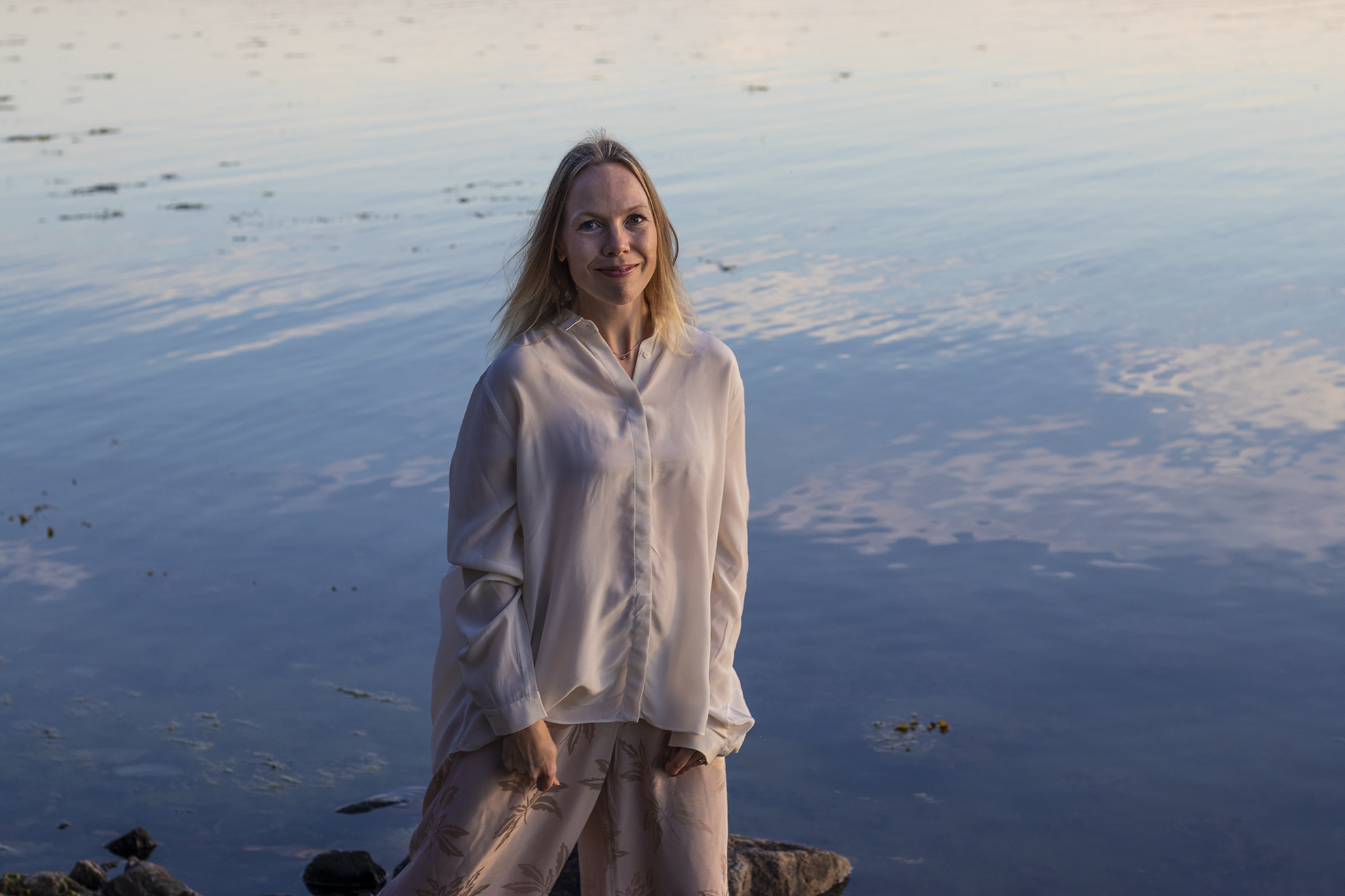Clouds represent the focus of your artistic research. Why?
For me, clouds expose the unknown. They are always in motion, constantly in a state of becoming. For some years now, I have been having conversations with climate scientists. Our discussions revealed that there are so many processes in the atmosphere which remain unknown. This idea of the unknown inspires me. In this sense, my art is about moving beyond the factual and towards the sensory to address things that cannot be expressed entirely through language. Clouds are made from an ensemble of invisible micro-events initiated by the condensation of tiny air particles in the atmosphere, known as aerosols. The incredibly brief yet crucial moment of transformation known as ‘supersaturation’, is of great importance to our climate but still relatively incomprehensible to us.
My fascination with air and atmospheric aerosols is that they are such a complex matter. Depending on their particular qualities, they influence the clouds and have far-reaching effects on the climate system. The wind, rain, cloud formation and aerosols are all interconnected. Marine clouds, for instance, are different to forest clouds because of the ocean salt. Aerosols also provide me with an ideal way to zoom in on the topic of air pollution.
As part of my long-term research project ‘Supersaturation’, I created a video installation in which multiple layers of invisible information are combined to provide a sensory experience. As time goes on the video ‘saturates’ in colour, motion and sound.

Supersaturation, 2021, Courtesy of the artist
How do you incorporate technology and data in your work?
My works are continuous processes. Their evolution is often catalysed by interactive technology and real-time data measured directly in the atmosphere. The artwork’s emergence is tied to the surrounding atmospheric conditions and the invisible changes in the environment. Through both technology and art, we can have a personal relationship to something that we wouldn’t otherwise be able to. I’m interested in looking at the environment, not only through what is visible, but also what isn’t. I like to develop a gradual experience that I hope the audience will perceive. During my exhibitions there’s always an ongoing process or a material change. One of the reasons why I work with real-time data is because it can really expand the experience of the artwork once people know where the data is coming from. It allows the viewer to engage on a more personal level. There is an increasing amount of climate data in the world. Everyone should be able to understand it and see its potential. Art can react to this.
You are based between Helsinki and London. What are the differences in the approach to the environment in the two cities?
In Finland we have a really different rapport to nature because our country is so tied to it, culturally as well as geographically. Since my art is about exploring that relationship or even enhancing our consciousness of it, having direct access to nature and natural processes is crucial to my art. London gives me inspiration, intensity and collaborations. For me it’s good to have the balance between the two countries and the two environments -– city and nature. Of course, Helsinki is a city too but I have a forest outside my studio.
How do you relate to the term ‘environmental art’? What has inspired your thinking?
Rather than ‘environmental art’, I often use the term ‘climate interaction’ because it’s all about allowing us to communicate better with our climate. However, for me this is about interaction with the environment as opposed to interaction between the audience and the work. In my work I’ve been inspired by writers such as Maurice Blanchot and Giorgio Agamben. Both of them talk about ‘radical passivity’ – the absence or the silent spaces from which language emerges. In order to break your usual patterns of thought and create something new, you need to reinvent that absence. This has been a starting point for many of my processes because when I work with an unknown outcome, or something which is lost in the moment – like the brief moment of an aerosol lifetime – I’m always dealing with a space of possibility.
In terms of the environment and climate change we also need a break from conventions. This is why I choose to have a more philosophical approach to engaging with the environment rather than talking about politics directly. My work is more about subtle experiences and poetic imagination because I think this can trigger a space of potentiality, whether it’s threatening, hopeful or both. This relates to the experience of the unknown inherent in clouds because in order to really renew our being on Earth we need to ‘unknow’ ourselves.
What else are you working on?
I am also deeply interested in the symbiosis between the air, clouds and boreal forests, the northernmost and coldest forests on earth. For instance, the scent in the air that we recognise from coniferous trees is part of the chemistry that produces specific clouds over boreal forests. ‘Atmospheric Un/knowing’ is a walk I have created in the boreal forest in southern Finland. Along the path, transparent atmospheric poems reveal and rewrite the cloud for us. Clouds are always responsive to the changes in the environment. This is the kind of sensitivity I would like to achieve with my work.

Atmospheric Unknowing, 2020, Courtesy of the artist
Any news to announce?
In September I will have a residency at the Finnish Institute in Athens to continue an ongoing project on Kairos climate time and in November I will be part of an exhibition in London with the Intelligence Debiased research group organised by Exposed Arts Project.
Stefano Vendramin
More info : www.josefinanelimarkka.com
Impact Art News, May-June 2022

